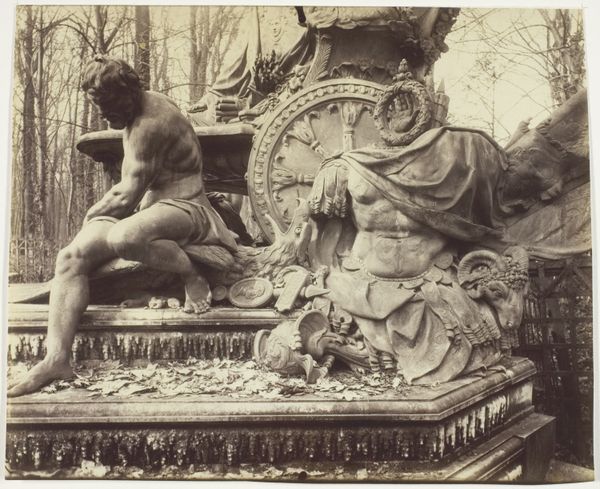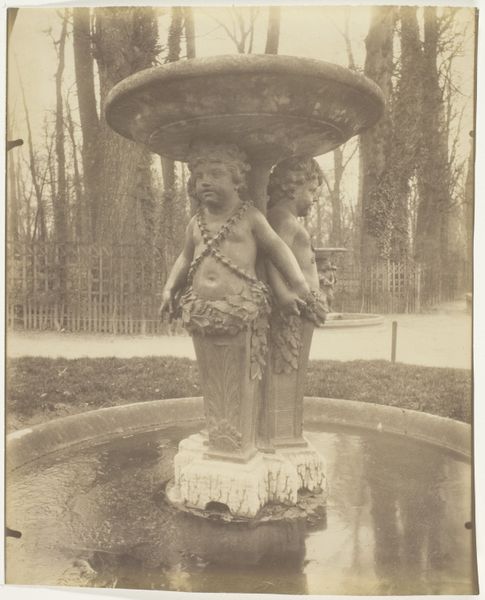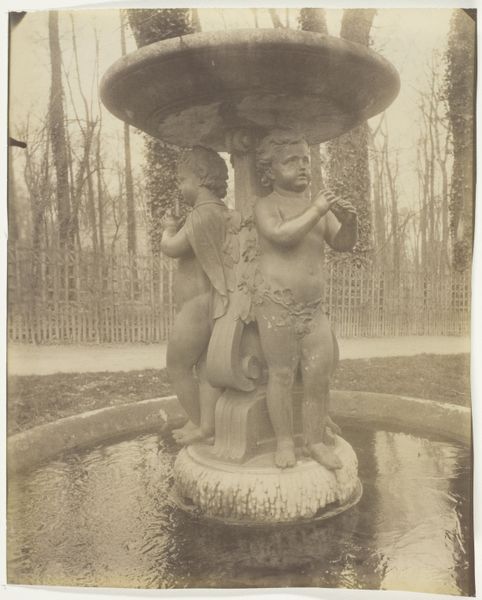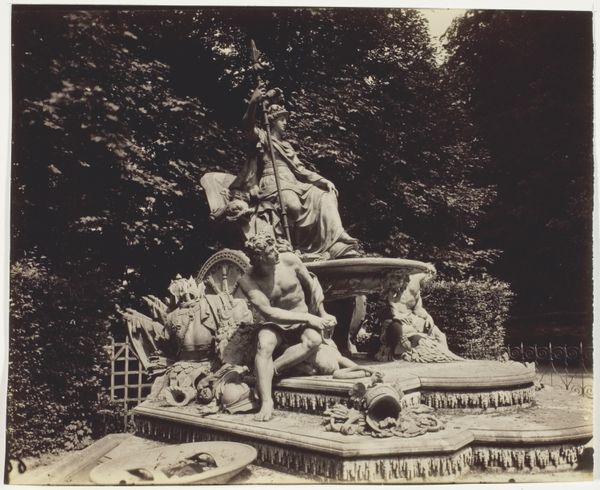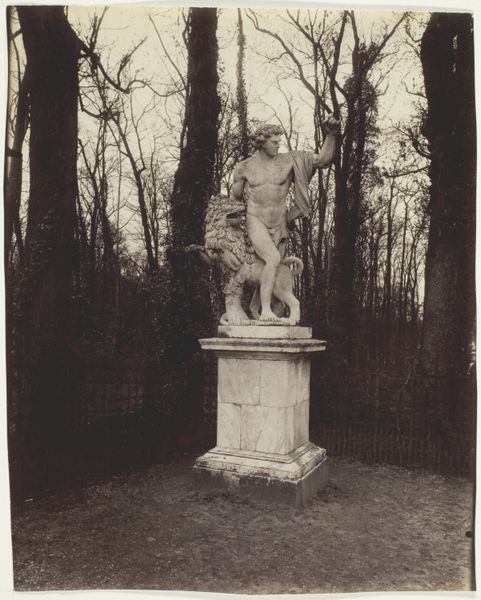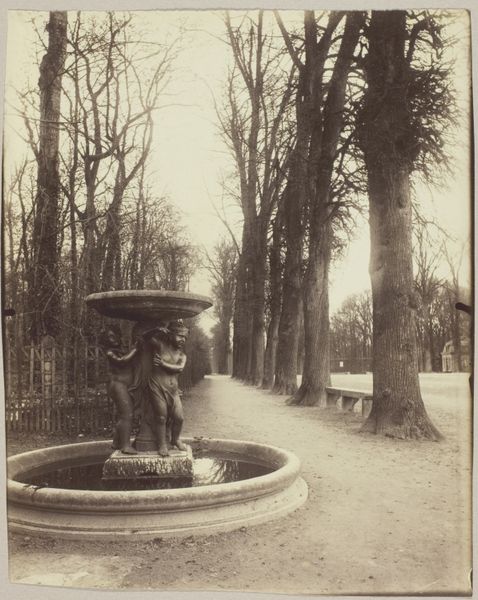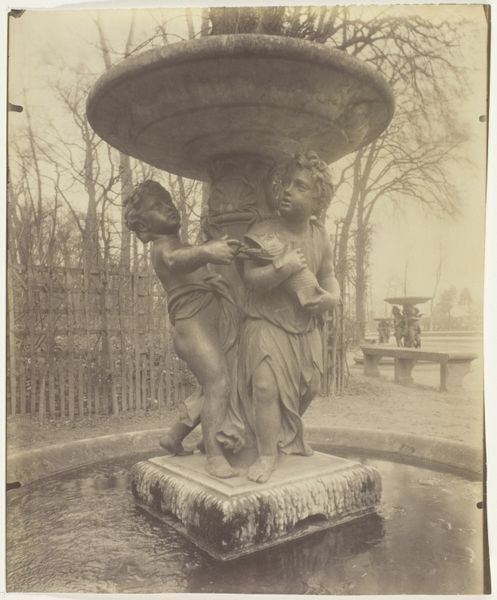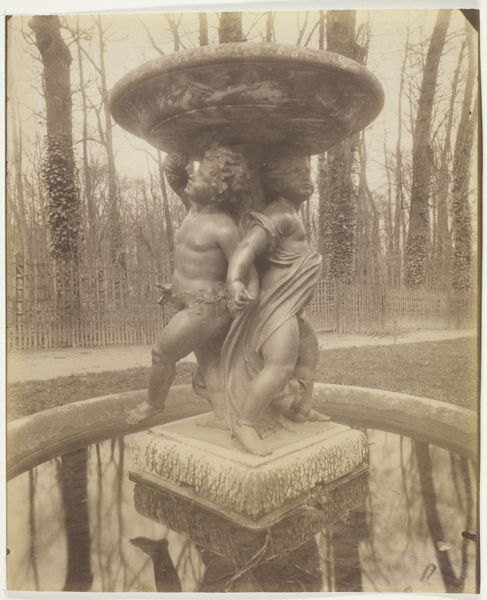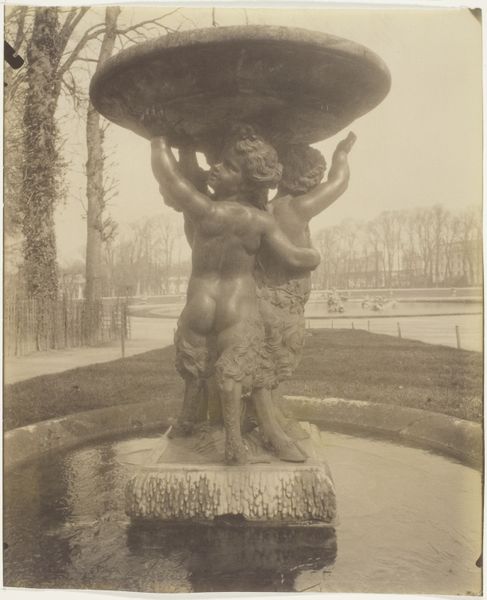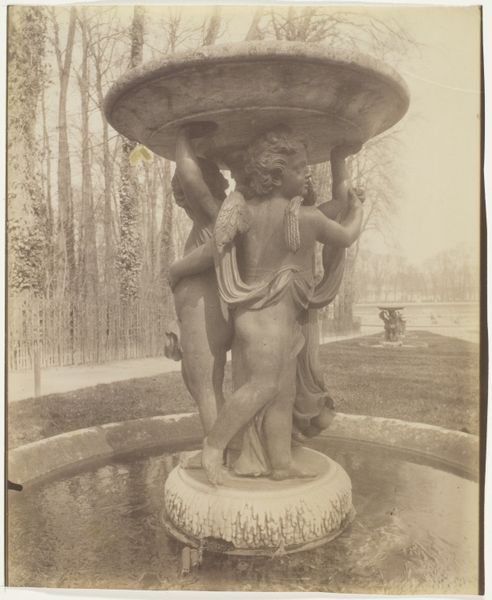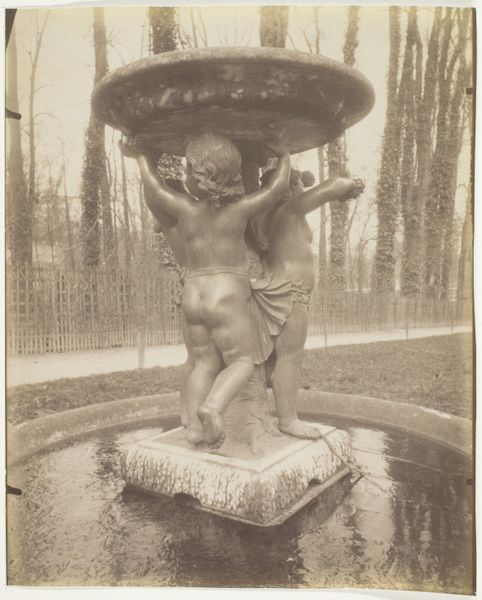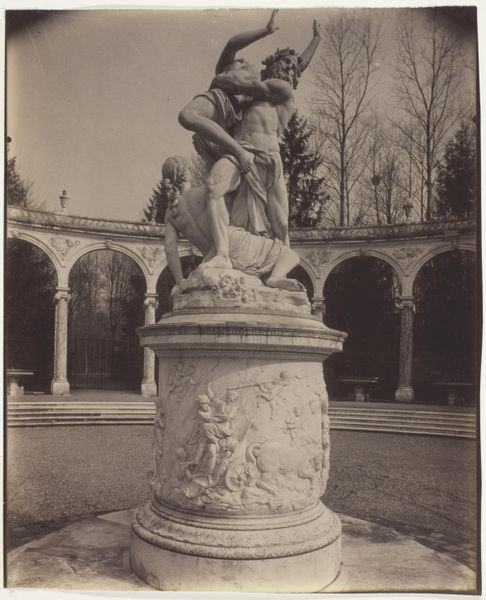
print, photography, sculpture
#
neoclassicism
# print
#
french
#
landscape
#
photography
#
sculpture
#
france
Dimensions: 21.8 × 17.6 cm (image); 21.8 × 17.9 cm (paper)
Copyright: Public Domain
Curator: Eugène Atget's photograph, taken in 1904, is titled "Versailles, Bosquet de l'Arc de Triomphe." Editor: It's striking, this composition! A melancholy monumentality pervades it. The fountain, or what's left of it, projects an image of decay against the backdrop of those looming trees. Curator: Absolutely. What fascinates me is Atget's choice to document not just the grand architecture of Versailles, but also these smaller, more intimate, almost forgotten spaces like the bosquet. It speaks to the legacy of royal power, now crumbling in plain sight, and available to the public eye through prints like this. Editor: The craftsmanship on the sculptures is extraordinary—observe the labor and the skill required to create these allegorical figures. I wonder about the material sources as well: where the stone came from and the quarrymen's involvement, not just the master sculptor’s design. This process contrasts with the seeming disposability suggested by the leaves scattered across the work. Curator: Right, this area was once a formal garden meant for royal entertainment and display, meticulously planned to reinforce royal authority through staged spectacle and the control of nature. Atget's photograph highlights the gradual erosion of that authority, both physically on the fountain and symbolically as Versailles transitioned into a public museum. The shift is huge: from carefully controlled private space to available historical document for a bourgeois public. Editor: It's a fascinating tension – the high art aspiration of neoclassical sculpture meets the banal materiality of fallen leaves and aging stone. Atget's work forces us to reconsider how value shifts with time. Who determines which artifacts or environments will remain significant? How does that influence later manufacturing trends? Curator: The photograph, too, acts as a critical historical artifact in itself, revealing the layered social contexts embedded within Versailles' manicured landscape. Atget challenges the notion of Versailles simply as a palace but as a site laden with political meanings—yesterday and today. Editor: This image, then, it is not just of a sculpture or an idle shot, but one documenting a system of work, production, and perception undergoing profound changes at the turn of the century. It certainly pushes past the old categories of ‘high’ and ‘low.’ Curator: Indeed, reflecting on it has given me new appreciation for the political role such monuments play, even as they appear static in time. Editor: And I’ve seen how analyzing something from the vantage of materials gives a new meaning for labor in fine arts like sculpture and how social trends influenced its eventual obsolescence.
Comments
No comments
Be the first to comment and join the conversation on the ultimate creative platform.

